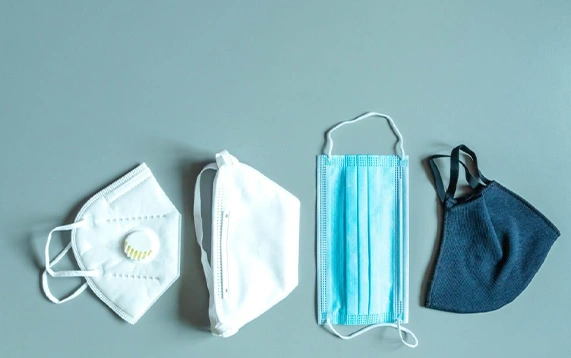What do I need to know about masks for non-sanitary uses or masks for the general public?
- Definition of masks for non-sanitary uses / barrier masks / alternative fabric masks: an individual mask intended for the general public and cannot be used by healthcare personnel in contact with patients. (1, 4)
- The « barrier mask » device is intended to complement the barrier gestures and the rules of physical distancing which are essential. (1)
- The barrier mask is not intended for patients with a viral or bacterial infection, nor for people with respiratory symptoms for whom wearing a surgical mask is prescribed. (1)
- This mask protects the user's environment and protects its user against possible viral or bacterial penetration into the « mouth and nose » area. (1)
- The overall performance of a protective mask takes into account design, materials, fit, breathability and sealing. (1)
- The breathability of these masks will be at a level allowing them to be worn for a maximum of 4 hours. (2)
- The mask must be able to fit tightly over the nose, mouth and chin of the person wearing it to provide a perfect seal on the sides. It must not have a sagittal seam (vertical at the level of the mouth and nose). (2)
- These masks are indicated, today by default, as being single-use (wearing time of 4 hours). However, a reusable or multiple-use mask must include instructions indicating the washing method and the number of treatment cycles. (2)
- Concerning the treatment protocol allowing reuse of fabric masks for non-sanitary use, the complete treatment cycle should be carried out consecutively in its entirety. The treated masks will be stored in such a way as to preserve the microbiological cleanliness of the masks at the end of treatment (e.g. packaging in zipped plastic bag). (3, 4)
- For treatment in industrial laundry:
- Machine wash with a detergent suitable for the fabric, the cycle of which will include at least one 30-minute plateau at 60°C, (3)
- Drying in a dryer barrel at the set temperature of 90°C, until completely dry. (3)
- For home treatment:
- Machine wash with a detergent suitable for the fabric, the cycle of which will include at least one 30-minute plateau at 60°C, (3, 4)
- Alternative washing: The possibility of alternative manual washing must be recommended (example: hot or boiling water + soap or detergent). (3)
- Mechanical drying or conventional drying, followed in both cases by steam ironing at a temperature compatible with the composition of the mask. (4)
- Packaging and packaging: Each mask must be packaged separately in a transparent bag with a label stating: (4)
- The manufacturer
- The unique code of the conformity report
- Barrier mask for non-medical use
- Wearing time: 4 hours maximum
- The maintenance code:
- Number of washes
- Washing temperature (60°C)
- Ironing temperature (120/130°C)
- Alternative washing (hot or boiling water + soap or detergent)
- A conformity report (material and manufacture) issued by CETTEX is required in Tunisia.
Reference :
- 1 - AFNOR Spec – Barrier masks - AFNOR Groupe, 2020. Masques-barrieres.afnor.org [online]. Lien direct
- 2 - 2020. Ansm.sante.fr [online]. Lien direct
- 3 - 2020. Ansm.sante.fr [online]. Lien direct
- 4 - 2020. Santetunisie.rns.tn [online]. Lien direct

Products
- ACIDE ZOLEDRONIQUE / HEMATOLOGY
- ACIDE ZOLEDRONIQUE / HEMATOLOGY


